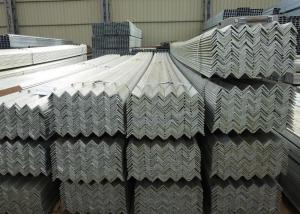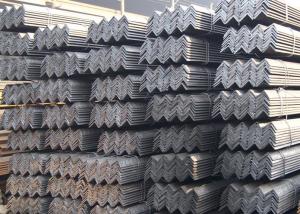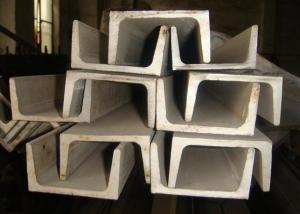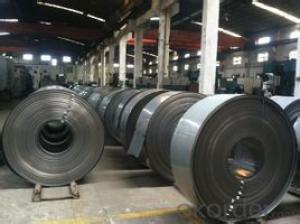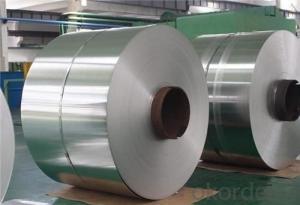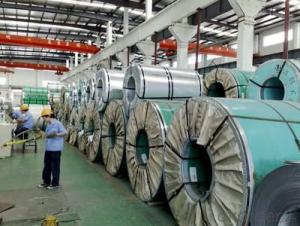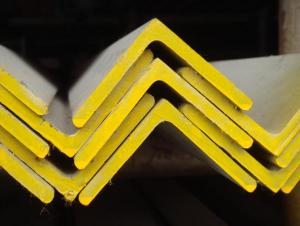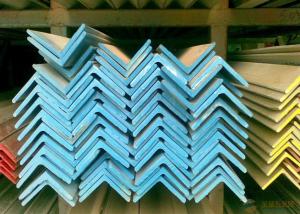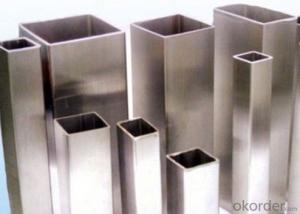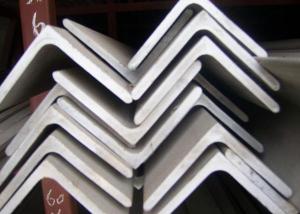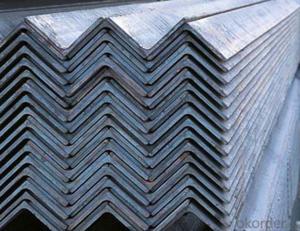Stainless Steel Angles Equal Shape
- Loading Port:
- China Main Port
- Payment Terms:
- TT or LC
- Min Order Qty:
- 1 Ton m.t.
- Supply Capability:
- 2000 Tons Per Month m.t./month
OKorder Service Pledge
OKorder Financial Service
You Might Also Like
Stainless Steel Angles
1.Grade: SS200,300,400 series
2.Size: 25×25×3 mm-100×100×10mm
3.Process: HRAP
4. Length: 2-6m
5. Shape: Equal
6. Delivery: within 20 days
7. MOQ: 1 ton
8. Certificate: ISO 9001:2008, SGS
9. Package:Standard Export Packing, or put into wooden boxes according to your
requirement
10. Application: Construction, Marine, Industry and so on
Name | Stainless Steel Angles | ||||||
Standard | ASTM A554, A312, A249, A269 and A270 | ||||||
Material Grade | 304,316,201,202, 316L,430 | ||||||
Length | 6m or as customers' request | ||||||
Tolerance | a) thickness: +/-0. 15mm | ||||||
| |||||||
b) Length:+/-4. 5mm - 0mm | |||||||
Surface | 180G, 320G, 400G Satin / Hairline(Matt Finish, Brush, Dull Finish) 400G, 500G, 600G or 800G Mirror finish | ||||||
Application | Decoration construction, upholstery, industry instruments | ||||||
Test | Squash test, Extended test, Water pressure test, Crystal rot test, Heat treatment, NDT | ||||||
Chemical Composition of Material |
Composition
Material | 201 | 202 | 304 | 316L | 430 | |
C | ≤0.15 | ≤0.15 | ≤0.08 | ≤0.08 | ≤0.12 | ||
Si | ≤1.00 | ≤1.00 | ≤1.00 | ≤1.00 | ≤1.00 | ||
Mn | 5.5-7.5 | 7.5-10 | ≤2.00 | ≤2.00 | ≤1.00 | ||
P | ≤0.06 | ≤0.06 | ≤0.045 | ≤0.045 | ≤0.040 | ||
S | ≤0.03 | ≤0.03 | ≤0.030 | ≤0.030 | ≤0.030 | ||
Cr | 16-18 | 17-19 | 18-20 | 16-18 | 16-18 | ||
Ni | 3.5-5.5 | 4-6 | 8-10.5 | 10-14 |
| ||
Mo |
|
|
| 2.0-3.0 |
| ||
Mechanical Property | Material Item | 201 | 202 | 304 | 316L | ||
Tensile Strength | ≥535 | ≥520 | ≥520 | ≥520 | |||
Yield Strength | ≥245 | ≥205 | ≥205 | ≥205 | |||
Extension | ≥30% | ≥30% | ≥35% | ≥35% | |||
Hardness (HV) | <253 | <253 | <200 | <200 | |||
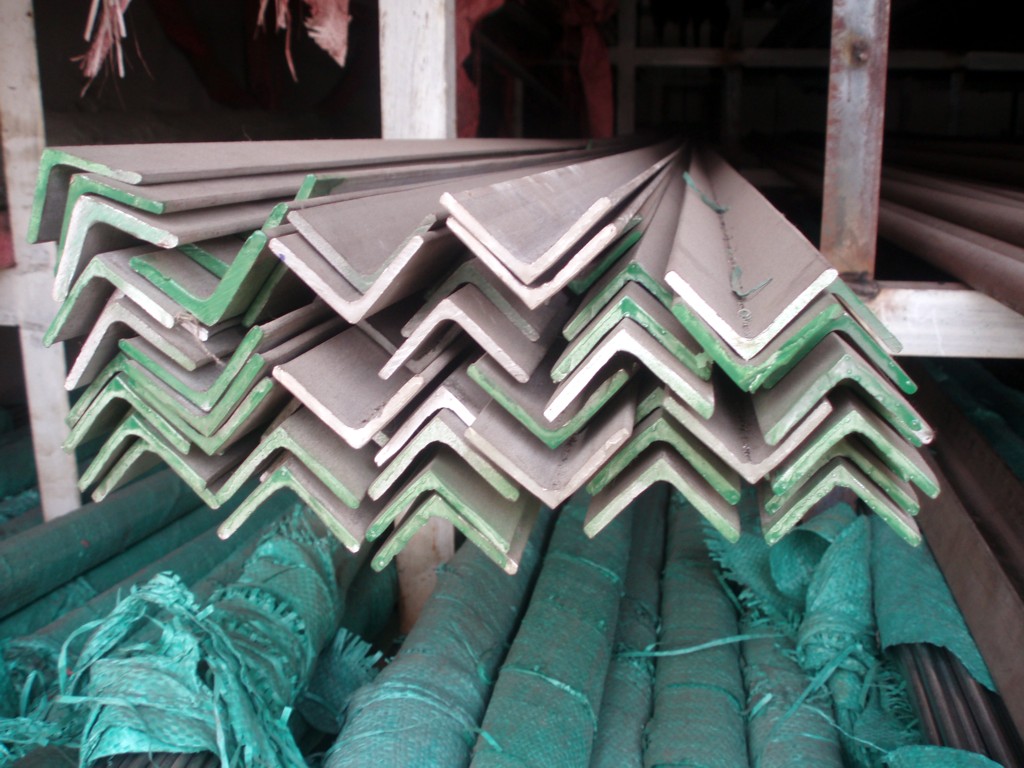
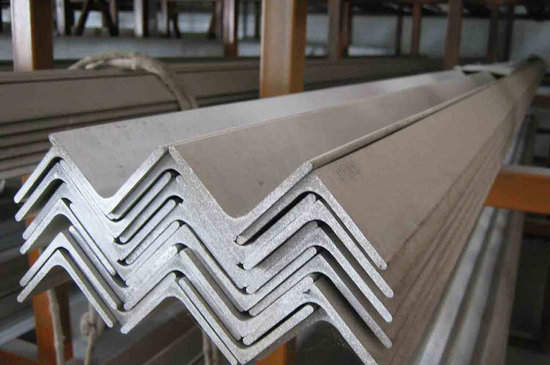
- Q:What are the different edge conditions for stainless steel angles?
- Some common edge conditions for stainless steel angles include sharp edges, rounded edges, chamfered edges, and beveled edges. These edge conditions are often chosen based on the specific application and desired aesthetic or functional requirements.
- Q:Can stainless steel angles be used in aerospace applications?
- Yes, stainless steel angles can be used in aerospace applications. Stainless steel is known for its high strength-to-weight ratio, corrosion resistance, and durability, which are all crucial properties required in the aerospace industry. Stainless steel angles can be used for various applications such as structural components, brackets, supports, and frames in aircraft, spacecraft, and satellites. The angles provide structural stability, allowing for efficient weight distribution and load-bearing capabilities. Additionally, stainless steel can withstand extreme temperatures and harsh environments, making it suitable for aerospace applications where the materials need to withstand high altitudes, intense vibrations, and exposure to various fluids and chemicals. Overall, stainless steel angles are a reliable and versatile choice for aerospace applications due to their exceptional mechanical properties and resistance to corrosion.
- Q:Can stainless steel angles be used in chemical storage tanks?
- Yes, stainless steel angles can be used in chemical storage tanks. Stainless steel is known for its excellent corrosion resistance and durability, making it an ideal material for storing chemicals. The use of stainless steel angles in the construction of the tank provides structural support and stability. Additionally, stainless steel is non-reactive to most chemicals, ensuring that the stored substances will not be contaminated. It is important, however, to select the appropriate grade of stainless steel that is compatible with the specific chemicals being stored in order to ensure optimal performance and longevity of the tank.
- Q:Can stainless steel angles be used in the transportation industry?
- Yes, stainless steel angles can be used in the transportation industry. Stainless steel is known for its durability, corrosion resistance, and strength, making it suitable for various applications in transportation. Stainless steel angles can be used in the construction of vehicle frames, trailers, railings, and other structural components. Additionally, stainless steel angles can withstand harsh environmental conditions, making them a reliable choice for the transportation industry.
- Q:What are the cost considerations for stainless steel angles?
- The cost considerations for stainless steel angles can vary depending on various factors such as the grade of stainless steel, the size and dimensions of the angles, the quantity required, and the supplier or manufacturer. Generally, stainless steel angles tend to be more expensive compared to other materials due to the durability, corrosion resistance, and aesthetic appeal they offer. Additionally, higher grades of stainless steel, such as 316 or 304, can also contribute to increased costs. It is important to consider these factors and obtain quotes from multiple suppliers to ensure competitive pricing.
- Q:Can stainless steel angle be used in food processing equipment?
- Yes, stainless steel angle can be used in food processing equipment. Stainless steel is widely used in the food processing industry because of its many desirable properties. It is resistant to corrosion, easy to clean, and does not react with food or alter its taste. Stainless steel angle, which is often used for structural support or as a framework in equipment, provides the same benefits. It is durable, hygienic, and can withstand the harsh conditions of food processing environments. Additionally, stainless steel meets the strict sanitary standards and regulations set by food safety organizations. Therefore, stainless steel angle is a suitable choice for food processing equipment.
- Q:How do you calculate the deflection of a stainless steel angle?
- To calculate the deflection of a stainless steel angle, you need to utilize the principles of structural engineering and apply relevant formulas such as Euler's formula or the equation for beam deflection. These formulas take into account factors such as the material properties of stainless steel, the dimensions of the angle, and the loading conditions. By inputting these variables into the appropriate equations, you can determine the deflection of a stainless steel angle.
- Q:What is the difference between mill finish and polished stainless steel angles?
- Stainless steel angles can have two different finishes: mill finish and polished finish. Mill finish angles are produced using a manufacturing process that leaves the surface of the stainless steel with a dull and rough appearance. This finish is characterized by visible lines and marks from the manufacturing process, such as grinding or brushing. Mill finish angles are commonly used in applications where aesthetics are not the main concern and functionality and durability are prioritized. On the other hand, polished stainless steel angles undergo an additional process that improves the appearance of the stainless steel. This process removes the roughness and imperfections of the mill finish, resulting in a smooth and reflective surface. Polished angles are often used in applications where aesthetics are important, such as architectural projects, decorative elements, and furniture. In conclusion, the main difference between mill finish and polished stainless steel angles lies in the appearance of the surface. Mill finish angles have a rough and unrefined look, while polished angles have a smooth and shiny finish. The choice between the two finishes depends on the specific requirements and preferences of the application at hand.
- Q:What is the difference between 316L and 316LN stainless steel angles?
- The main difference between 316L and 316LN stainless steel angles lies in their chemical composition and mechanical properties. 316L stainless steel is a low carbon version of the 316 grade. It contains approximately 0.03% carbon, which helps to prevent sensitization and intergranular corrosion. This makes 316L ideal for applications where welding is required, as it minimizes the formation of carbide precipitation at the grain boundaries. Additionally, 316L offers excellent corrosion resistance in various environments, including both acidic and marine environments. On the other hand, 316LN stainless steel is a nitrogen-enhanced version of 316. It contains a higher nitrogen content (around 0.12-0.22%) compared to 316L, which provides improved strength and corrosion resistance. The addition of nitrogen helps to stabilize the austenitic structure of the steel, resulting in increased tensile and yield strength. This makes 316LN suitable for applications that require higher strength and toughness, such as pressure vessels and chemical processing equipment. In summary, while both 316L and 316LN stainless steel angles offer good corrosion resistance, 316L is preferred for its low carbon content and ease of welding, whereas 316LN is chosen for its higher strength and improved mechanical properties. The selection between the two grades depends on the specific requirements of the application.
- Q:How do stainless steel angles contribute to the overall strength of a product?
- Stainless steel angles contribute to the overall strength of a product by providing structural support and reinforcement. The angled shape of the stainless steel adds rigidity and stability to the product, making it more resistant to bending or collapsing under heavy loads or external forces. Additionally, stainless steel is known for its high tensile strength and corrosion resistance, further enhancing the durability and longevity of the product.
1. Manufacturer Overview |
|
|---|---|
| Location | Zhejiang, China |
| Year Established | 2010 |
| Annual Output Value | above US$16 million |
| Main Markets | East Asia, Middle East. |
| Company Certifications | |
2. Manufacturer Certificates |
|
|---|---|
| a) Certification Name | |
| Range | |
| Reference | |
| Validity Period | |
3. Manufacturer Capability |
|
|---|---|
| a)Trade Capacity | |
| Nearest Port | Shanghai |
| Export Percentage | |
| No.of Employees in Trade Department | above 10 people |
| Language Spoken: | English, Chinese |
| b)Factory Information | |
| Factory Size: | about 30000 square meter |
| No. of Production Lines | above 7 |
| Contract Manufacturing | OEM Service Offered |
| Product Price Range | Average |
Send your message to us
Stainless Steel Angles Equal Shape
- Loading Port:
- China Main Port
- Payment Terms:
- TT or LC
- Min Order Qty:
- 1 Ton m.t.
- Supply Capability:
- 2000 Tons Per Month m.t./month
OKorder Service Pledge
OKorder Financial Service
Similar products
New products
Hot products
Hot Searches
Related keywords
